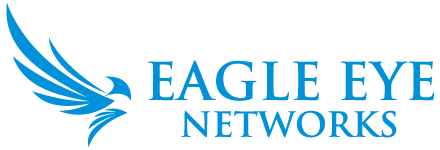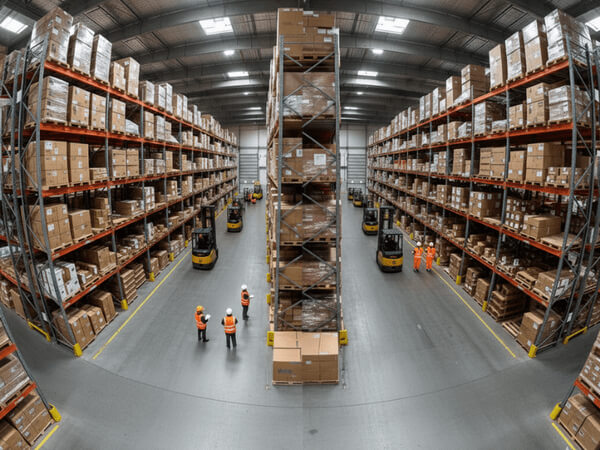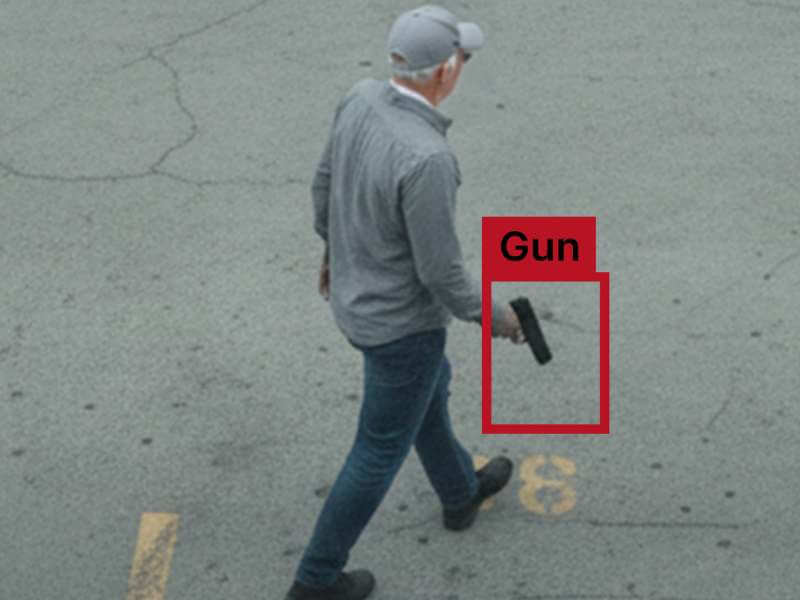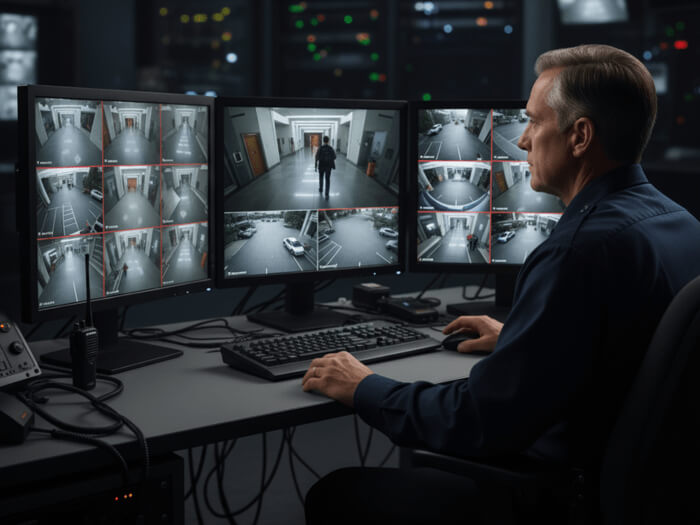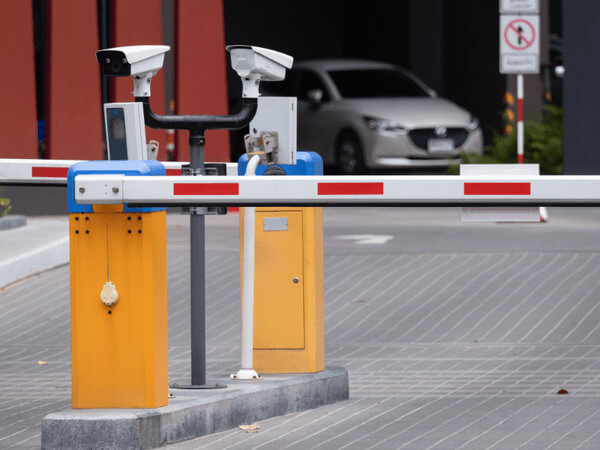
For typical surveillance deployments, your options are broad: the application may dictate that an overhead camera is necessary, or a camera capable of panning, tilting, and zooming (shorthand: “PTZ”). For some parts of your premises, a wider-angle lens or a lower camera resolution may suffice. It may not even need to be especially robust. But if you’re implementing license plate recognition (LPR), your choice of cameras isn’t just important — it’s absolutely critical.
So what makes an ideal LPR camera? Several factors contribute to fast, accurate plate reads.
Bullets, not blobs
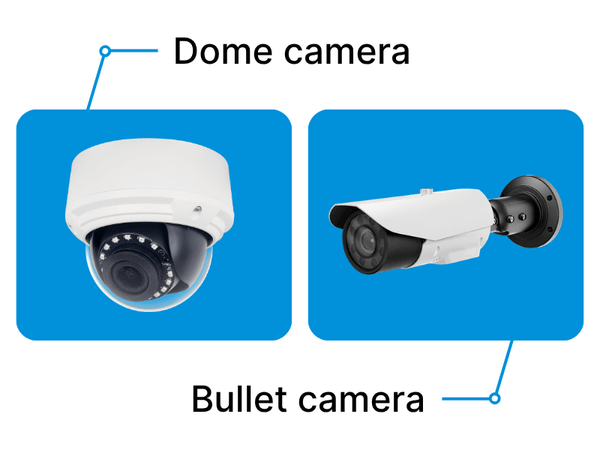
Dome cameras are optimized for wide-angle viewing, and in some cases for true 360-degree video capture that requires dewarping to view. This means objects are very small in the field of view and most license plates will be hard for the software to read. Bullet cameras, on the other hand, feature a tighter field of view and can be precisely pointed toward the area where plates will be — and that’s the right approach for reading them. Bullet cameras can be equipped with hoods to block glare and precipitation. They also have the advantage of straightforward mounting and lens options that some other camera types lack. Once in place, you want your LPR camera to simply remain in the right position. (Typically, that means mounted 6 to 10 feet off the ground, and angled down at around 30 degrees toward vehicle plates.)
Manual control
For typical surveillance camera use, cameras’ built-in smarts are lifesavers, adjusting with generally good results to bright or dim conditions, and adjusting focus to a reasonable distance. For reading license plates, though, manual control of both exposure and focus allows your software to specify the precise settings you need to cover your target area for the greatest accuracy.
Keeping steady
Cameras that can move and zoom on command are versatile and often can replace two or even more individual cameras. But PTZ is almost always the wrong choice for plate recognition. You need to be able to read plates in a predictable, highly constrained zone. That means a fixed, stable camera angle is a better choice. Accidentally or otherwise, a PTZ camera might be moved just off the right line of sight, greatly reducing its accuracy, or entirely losing its ability to capture plates. And if power is interrupted, a PTZ camera may return to its original default position, rather than pointed in the direction you need for plate detection.
Lighting things up
An ideal LPR camera is equipped with additional lighting to make nighttime identification easier, especially in environments where external lighting is difficult to control. Infrared (IR) lighting is a good choice when visible-spectrum light would be obtrusive and annoying. But that comes with an important requirement for your camera: it has to be sensitive to IR light. And of course, it means that IR-illuminated images have to generate accurate results in your LPR solution.
A good resolution
Some applications, like motion detection and even detection of people or vehicles on your premises, can be done with a very low-resolution camera. Plate reading, however, relies on getting a sharp, detailed picture of each plate. High resolution gives the recognition software more data to work with, especially important when plates are damaged, muddy, or feature regional-specific graphics or layout. We recommend a resolution of 1920 x 1080 pixels, even for situations where plates will be perfectly still when read.
Connectivity: How, and how fast
Especially when LPR is used as the basis for vehicle access control, rather than just recording the presence of particular vehicles, you need a fast, reliable outbound connection to avoid the frustration for users. No one wants to wait for a gate to open while the system connects to the cloud to verify a plate, then wait to receive confirmation. In some contexts, a Wi-Fi connected camera may suffice, but for a swift and consistent response, a direct connection to your VMS is vital.
While Eagle Eye’s LPR solution can work with nearly any LPR-optimized camera, the Eagle Eye DB-14 camera meets the requirements listed above and is our recommendation for LPR deployments.

It’s not just the camera you choose
So far, we’ve only talked about camera choice. That’s because you can’t make up for a poor video source, and license plates present tough challenges to cameras and to the AI systems that recognize and act on them.
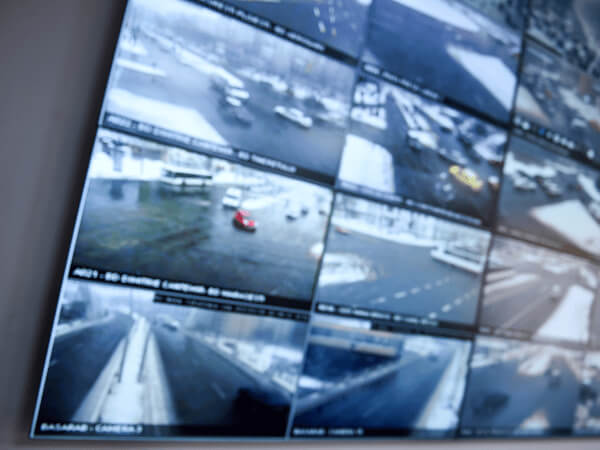
But every factor in your actual environment matters, and should be considered before you start running wires: light, angle, and distance to plates, expected weather conditions, and more all matter. (From whether you need to account for condensation on the lens to whether you need a license plate read to trigger a particular action.) You may also consider whether people will back up your LPR system, and whether that’s an on-site security team or a remote video monitoring service. Eagle Eye’s LPR solution is extremely accurate, but remote monitoring allows you to instantly review questionable plate reads and manually trigger actions or escalate as needed.
These real-world factors explain why system integration and configuration are just as important as camera selection.
Whether you need license plate reading to help streamline employee parking, to recognize repeat customers, or to keep track of a whole fleet of vehicles, we can help you understand the solution that would work best for you, from specifying a system to designating actions that license plate recognition can trigger.

Timothy Lord has witnessed and written about IT security trends and the ongoing evolution of SaaS for more than 25 years.
Other posts that might interest you

Video Surveillance 101: Field of view, distortion, and dewarping
When you select a camera for video surveillance, an important aspect that you're actually choosing is the camera's lens. Just like typical cameras you use to take snapshots, surveillance cameras…
November 11, 2025
Are there guns in the picture? How video surveillance helps
There have been many cases in which armed criminals have wounded or killed others, sometimes with no known motive, or as a result of personal grievances. Sadly, recent years have…
October 15, 2025
Surveillance 101: Remote video monitoring explained
You've probably seen movies where government agencies, shadowy masterminds, or company security teams have instant access to surveillance cameras from around the world and can zoom in on any subject…
September 30, 2025
